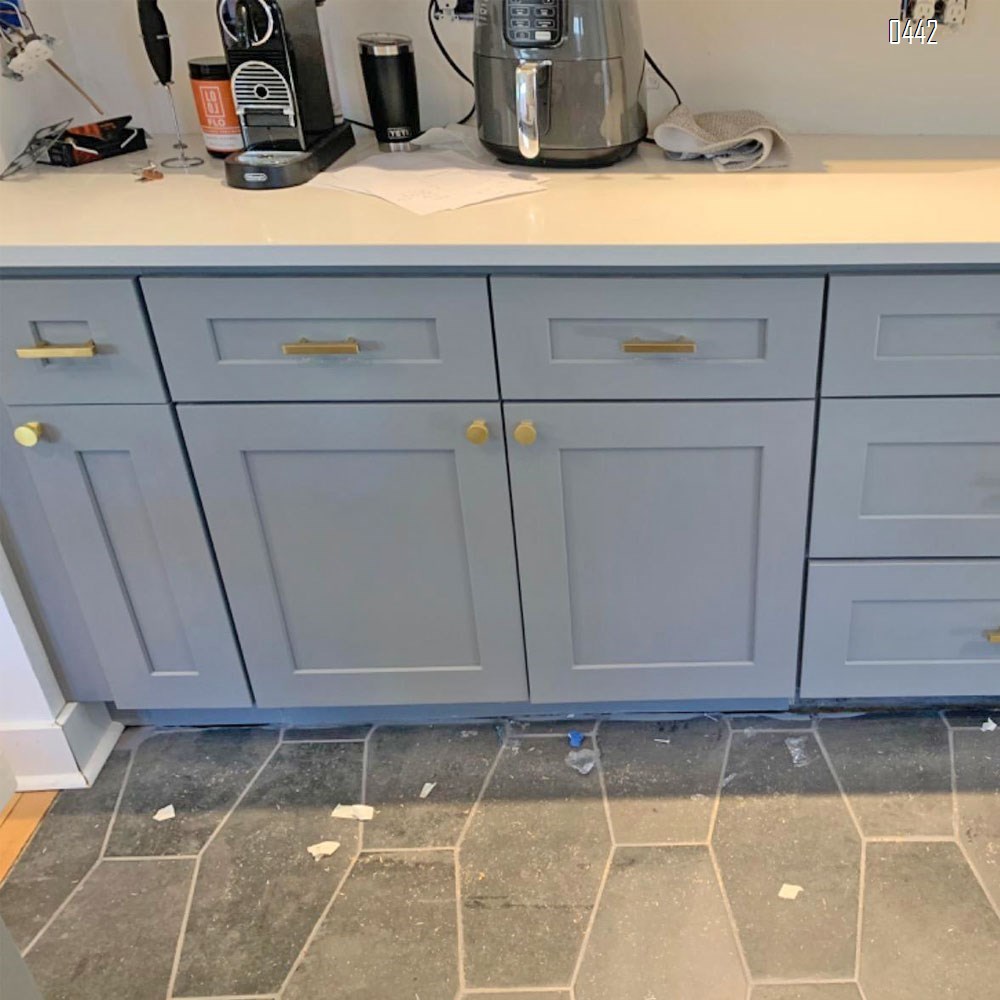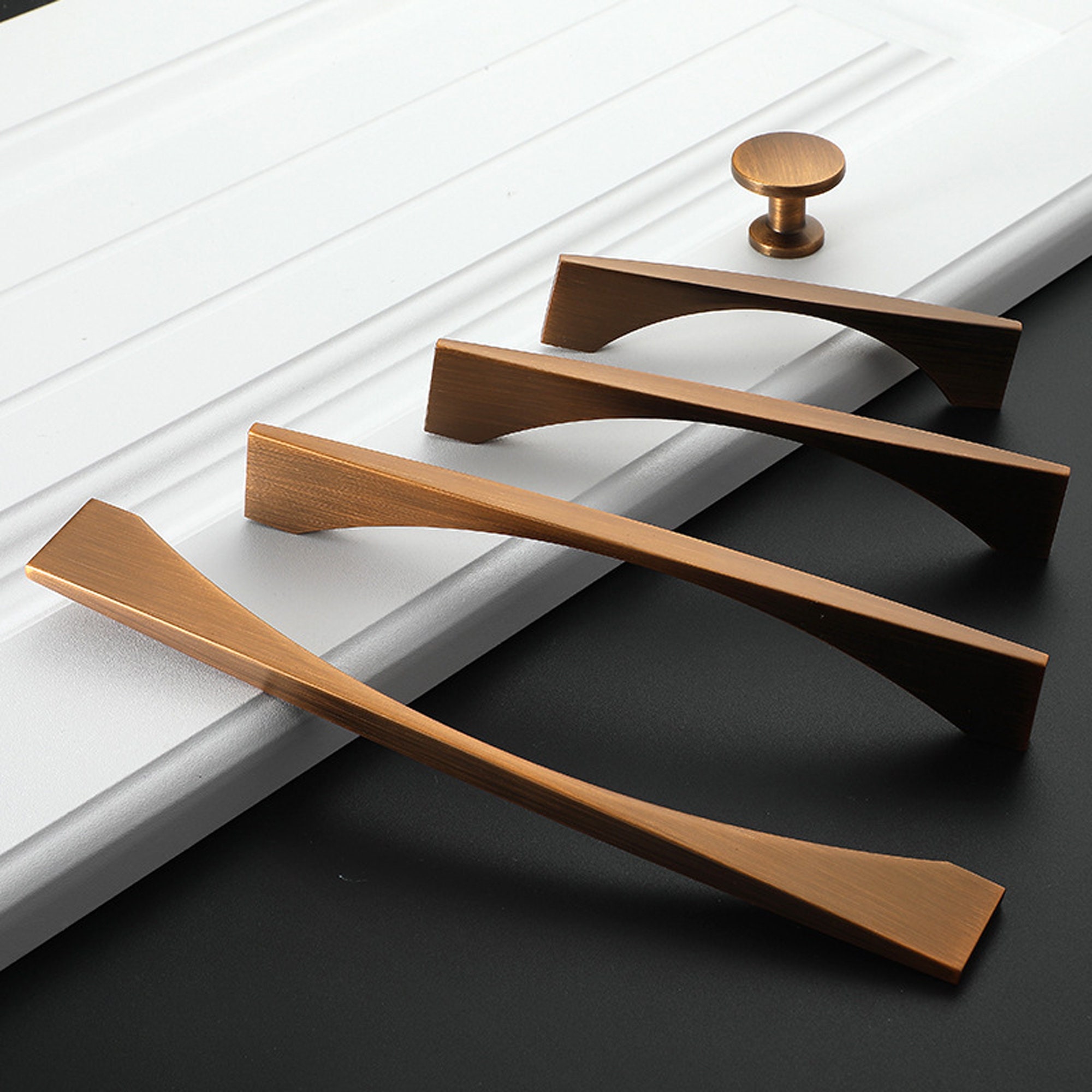History and Evolution of European Cabinet Pulls

European cabinet pulls, a seemingly simple element of furniture design, have a rich history intertwined with evolving architectural styles, craftsmanship, and cultural preferences. Their journey from functional necessities to decorative accents reflects the changing tastes and technological advancements across centuries.
Origins and Early Development
The origins of cabinet pulls can be traced back to ancient times, where simple handles made of wood, bone, or metal were used to open chests and containers. During the Middle Ages, cabinet pulls became more elaborate, incorporating intricate carvings and metalwork. The Renaissance period saw a renewed interest in classical design, leading to the emergence of pulls inspired by Greek and Roman motifs.
Baroque and Rococo Influences
The Baroque era (1600-1750) ushered in a period of opulence and grandeur, reflected in cabinet pulls adorned with elaborate ornamentation, such as scrolls, leaves, and floral patterns. Materials like gilded bronze and silver became popular, adding a touch of luxury. The Rococo style, which followed, further emphasized intricate details and playful curves, often featuring whimsical designs incorporating shells, flowers, and asymmetrical shapes.
Neoclassical Revival and the 19th Century
The Neoclassical movement, starting in the late 18th century, emphasized simplicity and symmetry, drawing inspiration from ancient Greek and Roman architecture. Cabinet pulls during this period were characterized by clean lines, geometric patterns, and restrained ornamentation. The 19th century saw a resurgence of elaborate designs, with influences from various historical styles, including Gothic Revival, Victorian, and Art Nouveau.
Popular European Cabinet Pull Styles, European style cabinet pulls
European cabinet pull styles can be broadly categorized based on their design features and historical context:
- Baroque: Characterized by elaborate ornamentation, scrolls, leaves, and floral patterns. Materials like gilded bronze and silver were commonly used. Examples include the “Fleur de Lis” pull and the “Rosette” pull.
- Rococo: Emphasizes intricate details, playful curves, and whimsical designs. Common motifs include shells, flowers, and asymmetrical shapes. Examples include the “Shell” pull and the “Cabriole” pull.
- Neoclassical: Emphasizes simplicity, symmetry, and clean lines. Geometric patterns and restrained ornamentation are common. Examples include the “Adam” pull and the “Doric” pull.
- Victorian: Characterized by elaborate designs, intricate details, and a mix of historical styles. Materials like cast iron, brass, and porcelain were popular. Examples include the “Gothic Revival” pull and the “Eastlake” pull.
- Art Nouveau: Emphasizes organic forms, flowing lines, and nature-inspired motifs. Materials like wrought iron, copper, and glass were used. Examples include the “Whimsical” pull and the “Floral” pull.
Notable European Cabinet Pull Designers and Manufacturers
Over the centuries, numerous European designers and manufacturers have made significant contributions to the evolution of cabinet pulls. Some notable examples include:
- The Puiforcat family (France): Known for their exquisite silver and gold craftsmanship, they produced elegant and ornate cabinet pulls during the 19th and 20th centuries.
- Josef Hoffmann (Austria): A leading figure in the Vienna Secession movement, Hoffmann designed functional and minimalist cabinet pulls, often incorporating geometric patterns and simple lines.
- Charles Rennie Mackintosh (Scotland): Known for his Art Nouveau designs, Mackintosh created distinctive cabinet pulls featuring flowing lines, organic shapes, and a sense of elegance.
Materials and Craftsmanship in European Cabinet Pulls

European cabinet pulls have a rich history of craftsmanship, evident in the diverse materials and techniques used throughout the ages. From the enduring elegance of metalwork to the warmth of wood and the delicate artistry of ceramics and glass, European cabinet pulls have embodied the artistic sensibilities of their time.
Materials Used in European Cabinet Pulls
The choice of materials for European cabinet pulls has been influenced by factors such as availability, cost, and aesthetic preferences. Here is an overview of common materials:
- Metals: Metals, such as brass, bronze, iron, and silver, have been staples in European cabinet pull production. Brass, known for its durability and warm tones, has been widely used in traditional and contemporary designs. Bronze, valued for its patina and resistance to corrosion, adds a touch of antiquity. Iron, often used in forged designs, offers a rustic and industrial aesthetic. Silver, prized for its elegance and reflective qualities, is frequently found in high-end cabinet pulls.
- Wood: Wood, particularly hardwoods like oak, walnut, and mahogany, has been a traditional material for European cabinet pulls. Wood pulls offer a natural, warm, and tactile feel. They can be carved, turned, or inlaid with other materials to create intricate designs.
- Ceramics: Ceramics, such as porcelain and earthenware, have been used to create decorative and durable cabinet pulls. They can be glazed, painted, or decorated with intricate patterns and motifs. Ceramic pulls add a touch of elegance and sophistication to cabinetry.
- Glass: Glass, in its various forms, offers a unique and versatile material for cabinet pulls. Clear glass provides a minimalist and modern look, while colored glass adds a touch of vibrancy. Glass pulls can be shaped, etched, or decorated with intricate designs.
Traditional Craftsmanship Techniques
Traditional craftsmanship techniques have played a pivotal role in the creation of European cabinet pulls. These techniques have been passed down through generations of artisans, ensuring the preservation of unique skills and artistry:
- Forging: Forging involves heating metal and shaping it using hammers and anvils. This technique is often used to create intricate and durable iron cabinet pulls. The process requires skilled artisans who can manipulate the metal with precision and control.
- Casting: Casting involves pouring molten metal into a mold to create a desired shape. This technique is commonly used for producing brass and bronze cabinet pulls. It allows for the creation of intricate details and complex designs.
- Carving: Carving involves using tools to shape wood or other materials. This technique is often used to create intricate designs on wooden cabinet pulls. Skilled carvers can create delicate details and elaborate patterns.
- Turning: Turning involves rotating a piece of wood or other material on a lathe and shaping it with tools. This technique is used to create cylindrical or spherical cabinet pulls. Turning allows for the creation of smooth, symmetrical forms.
- Hand-painting: Hand-painting involves applying paint or glaze to ceramic or glass cabinet pulls using brushes or other tools. Skilled artisans can create intricate patterns, delicate brushstrokes, and vibrant colors. This technique adds a personal touch and unique character to each pull.
Artistic and Technical Aspects of European Cabinet Pull Design
The design of European cabinet pulls has always been a blend of artistry and technical skill. Artisans have incorporated elements of traditional craftsmanship, artistic inspiration, and technological advancements to create visually stunning and functional hardware.
- Design Motifs: European cabinet pulls have often featured motifs inspired by historical periods, cultural influences, and natural elements. These motifs can range from ornate rococo designs to minimalist geometric patterns. Examples include floral motifs, animal figures, heraldic symbols, and geometric shapes.
- Finishes: The finish of a cabinet pull can significantly impact its overall appearance and aesthetic appeal. Traditional finishes include polishing, antiquing, patination, and lacquering. These techniques can enhance the natural beauty of the material or create a distressed or aged look.
- Functionality: European cabinet pulls are not only decorative but also functional. They must be designed to withstand wear and tear, provide a secure grip, and complement the overall design of the cabinetry. Considerations include the size, shape, and placement of the pull, as well as its ease of use.
Innovative Materials and Techniques in Contemporary European Cabinet Pull Designs
Contemporary European cabinet pull designers continue to push the boundaries of materials and techniques. They are exploring innovative approaches to create unique and functional hardware:
- Sustainable Materials: Increasingly, designers are incorporating sustainable materials into their designs. This includes using recycled metals, reclaimed wood, and eco-friendly finishes. These choices reflect a growing awareness of environmental concerns and a commitment to responsible design practices.
- 3D Printing: 3D printing technology is being used to create intricate and complex designs for cabinet pulls. This technology allows for the creation of custom shapes and forms, as well as the use of a wide range of materials, including metals, plastics, and composites.
- Digital Fabrication: Digital fabrication techniques, such as CNC machining and laser cutting, are being used to create precise and detailed designs. These techniques allow for the production of high-quality cabinet pulls with complex geometries and intricate patterns.
- Smart Materials: Designers are exploring the use of smart materials, such as thermochromic and photochromic materials, which change color or properties in response to temperature or light. These materials can add a unique and interactive element to cabinet pull designs.
Styles and Aesthetics of European Cabinet Pulls: European Style Cabinet Pulls

European cabinet pulls, with their intricate designs and enduring craftsmanship, are more than just functional hardware; they are artistic expressions of cultural heritage and design aesthetics. Each style reflects the unique history, materials, and artistic sensibilities of its region of origin, offering a glimpse into the diverse and captivating world of European design.
French Provincial
French Provincial cabinet pulls embody the rustic charm and elegance of the French countryside. Their design is characterized by simplicity, natural materials, and a touch of romanticism.
- Materials: French Provincial pulls are often crafted from wrought iron, brass, or ceramic, often featuring distressed finishes that enhance their rustic appeal.
- Finishes: Distressed finishes, such as antique brass, oil-rubbed bronze, or aged pewter, add a sense of timelessness and authenticity.
- Design Motifs: Floral patterns, stylized leaves, and delicate scrolls are common motifs, reflecting the influence of nature and the romantic sensibilities of the French countryside.
English Country
English Country cabinet pulls exude a sense of timeless elegance and refined simplicity, reflecting the traditional values and craftsmanship of the English countryside.
- Materials: English Country pulls are often made from brass, pewter, or wood, with a focus on natural materials and understated elegance.
- Finishes: Polished brass, satin nickel, or antique pewter finishes are common, adding a touch of sophistication to their classic design.
- Design Motifs: Simple geometric shapes, such as squares, circles, and ovals, are often incorporated, along with traditional floral patterns and delicate scrolls.
Scandinavian Modern
Scandinavian Modern cabinet pulls embody the minimalist aesthetic and functional design principles of Scandinavian design. They are characterized by clean lines, simple forms, and a focus on functionality.
- Materials: Scandinavian Modern pulls are typically crafted from polished stainless steel, chrome, or brass, with a focus on durable and modern materials.
- Finishes: Brushed nickel, polished chrome, or matte black finishes are common, reflecting the minimalist aesthetic of Scandinavian design.
- Design Motifs: Simple geometric shapes, such as squares, circles, and rectangles, are often incorporated, with a focus on clean lines and functional design.
Table of European Cabinet Pull Styles
| Style | Materials | Finishes | Design Motifs |
|---|---|---|---|
| French Provincial | Wrought iron, brass, ceramic | Distressed brass, oil-rubbed bronze, aged pewter | Floral patterns, stylized leaves, delicate scrolls |
| English Country | Brass, pewter, wood | Polished brass, satin nickel, antique pewter | Simple geometric shapes, traditional floral patterns, delicate scrolls |
| Scandinavian Modern | Stainless steel, chrome, brass | Brushed nickel, polished chrome, matte black | Simple geometric shapes, clean lines, functional design |
European style cabinet pulls, with their intricate designs and timeless elegance, can elevate any piece of furniture. If you’re looking to add a touch of European charm to your workspace, consider building your own flat file cabinet using a flat file cabinet diy guide.
Once finished, top it off with these stunning pulls for a truly personalized and functional storage solution.
European-style cabinet pulls, with their intricate designs and timeless elegance, can elevate any kitchen space. They’re especially striking when paired with the warm, rich tones of kitchen island cherry cabinets , creating a sophisticated and inviting ambiance. The combination of these elements speaks to a refined taste, where both form and function are considered, and the kitchen becomes a space to both cook and admire.
